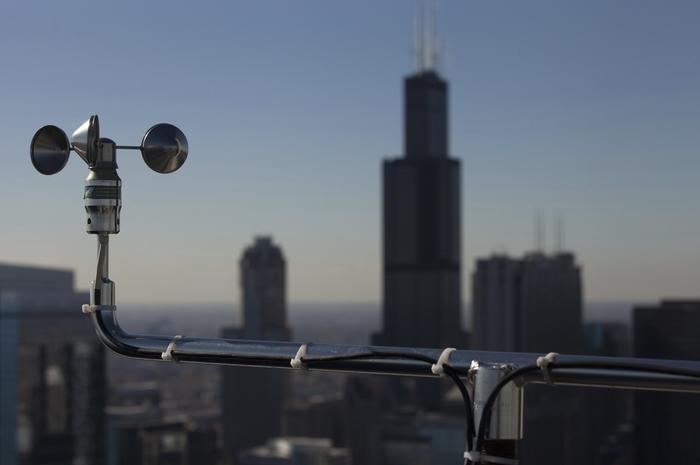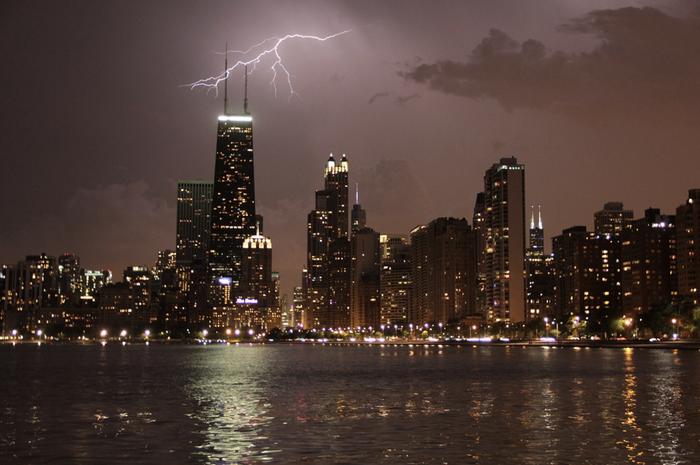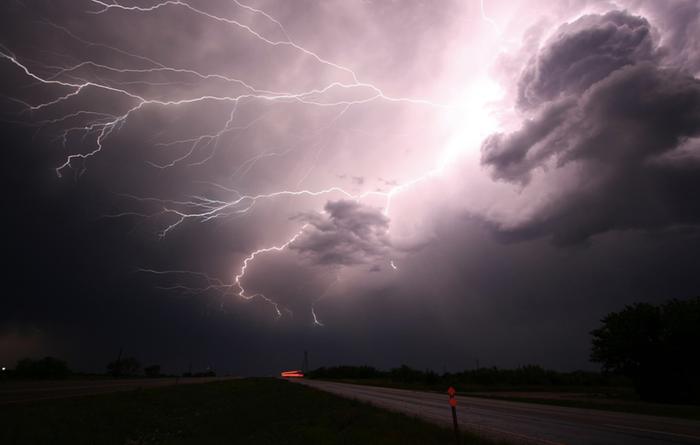What is the weather like in Chicago?
Chicago has a humid continental climate with four distinct seasons.

The climate of Chicago (Illinois) is humid continental, and there are four distinct seasons, which differ from one another. Summers often come with frequent heat waves and winters with blizzards and dramatic swings in temperature.
The temperatures in Chicago can vary anywhere between its official heat record of 109 °F (43 °C) and cold record of −25 °F (−32 °C). Typically the hottest month is July and the coldest January. Greatest rainfall occurs in May.
Chicago weather in summer: Heat waves and thunderstorms
Summers in Chicago are rather hot and humid. During the hottest month, July, the average daily maximum temperature reaches 84 °F (29 °C) and on rare occasions the temperature can surpass 100 °F (37,8 °C). Typically, temperatures rise above 90 °F (32 °C) on 23 days during summer time.
The heat may sound intense, but it's usually accompanied by a pleasant lake breeze, as Chicago is located on the shores of the Great Lakes. Heat waves are often associated with thunderstorms, which bring most of the city's annual rainfall. Every now and then thunderstorms can develop hail, damaging winds and tornadoes.
Heat waves arriving from the Gulf of Mexico can temporarily turn the city roasting hot, as the air contains great amounts of humidity. During these episodes "feels like" -temperatures can reach extremely high values and make the citizens sweat a lot.

Chicago weather in winter: Cold waves, blizzards and rapid temperature swings
Usually winters in Chicago are rather mild, but arctic waves from Canada are not uncommon. Besides the cold, Chicago is also prone to heavy snowfall due to its proximity to Lake Michigan. The lake is an important source of energy for winter-time convection.
The coldest month of the year is typically January, when the average daily maximum temperature is 32 °F (0 °C) and the average minimum 18 °F (–8 °C). During cold waves temperatures can drop as low as −25 °F (−32 °C). If Chicago would not be surrounded by the Great Lakes, the temperatures could drop even lower.
Lake Michigan stays mostly ice free during winters, making the city and the surroundings milder, especially when arctic air masses coming from the northern parts of Canada sweep south. Very cold air masses interacting with open waters can trigger extremely heavy snowfall events. This phenomena is called lake-effect snow. Also lighting may be formed; these events are called thundersnow events.
On an average year Chicago has 27 snowy days. Most of them occur between December and March.

Most of precipitation falls in the summer
The annual average precipitation in Chicago is 39 inches (993 mm). Most of it occurs during the warm season, between April and October. Precipitation amounts peak in early summer and typically May has the greatest rainfall, 4.13 inches (105 mm).
Winters are usually drier, and the least precipitation falls in February, with the monthly average of 1.94 inches (49 mm).
As mentioned above, most rainfall in Chicago comes from thunderstorms during summer months. Autumns and winters bring frequent cyclones with long-lasting rains and wind. Sometimes in situations, where two different air masses (northern, cold and dry, and southern, warm and humid) meet and battle for dominance over the warm surface waters of the Great Lakes, these cyclones may intensify. This leads to stormy winds and heavy snowfall.
| Month | Daily mean °F (°C) | Avg daily max °F (°C) | Avg daily min °F (°C) | Avg precip inc (mm) |
|---|---|---|---|---|
| January | 24.9 (–3.9) | 31.5 (–0.3) | 18.2 (–7.7) | 2.06 (52) |
| February | 28.7 (–1.8) | 35.8 (2.1) | 21.7 (–5.7) | 1.94 (49) |
| March | 38.8 (3.8) | 46.8 (8.2) | 30.9 (–0.6) | 2.72 (69) |
| April | 50.4 (10.2) | 59.2 (15.1) | 41.7 (5.4) | 3.64 (92) |
| May | 60.9 (16.1) | 70.2 (21.2) | 51.6 (10.9) | 4.13 (105) |
| June | 71 (21.6) | 79.9 (26.6) | 62.1 (16.7) | 4.06 (103) |
| July | 75.8 (24.3) | 84.2 (29.0) | 67.5 (19.7) | 4.01 (102) |
| August | 74.1 (23.4) | 82.1 (27.8) | 66.2 (19.0) | 3.99 (101) |
| September | 66.4 (19.1) | 75.3 (24.1) | 57.5 (14.2) | 3.31 (84) |
| October | 54.2 (12.3) | 62.8 (17.1) | 45.7 (7.6) | 3.24 (82) |
| November | 41.5 (5.3) | 48.6 (9.2) | 34.5 (1.4) | 3.42 (87) |
| December | 29.0 (–1.6) | 35.3 (1.8) | 22.7 (–5.2) | 2.57 (65) |
Tornadoes in Chicago
Chicago is located at the northern tip of the North American tornado alley. The city sees frequent thunderstorms, averaging 38 a year. If the atmospheric conditions are favorable, there is a risk of tornadoes in Chicago.
Severe thunderstorms can occur especially during late spring and early summer. When a southern hot and humid air mass meets a Canadian dry and cold air mass over the plains of Illinois, thunderstorm development can be fast and violent. As a result, the state of Illinois, where Chicago is located, sees on average 6–8 tornadoes per year.






